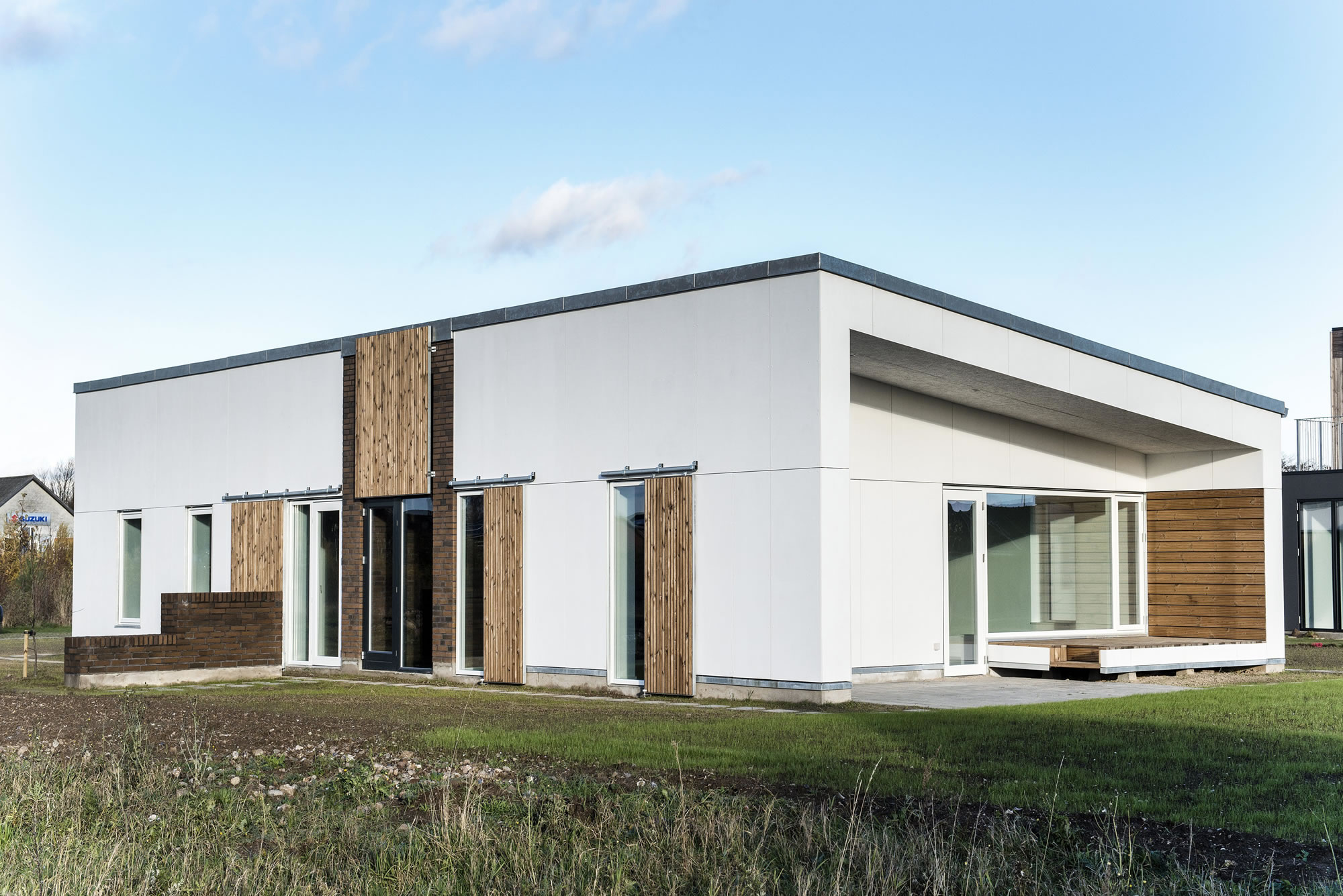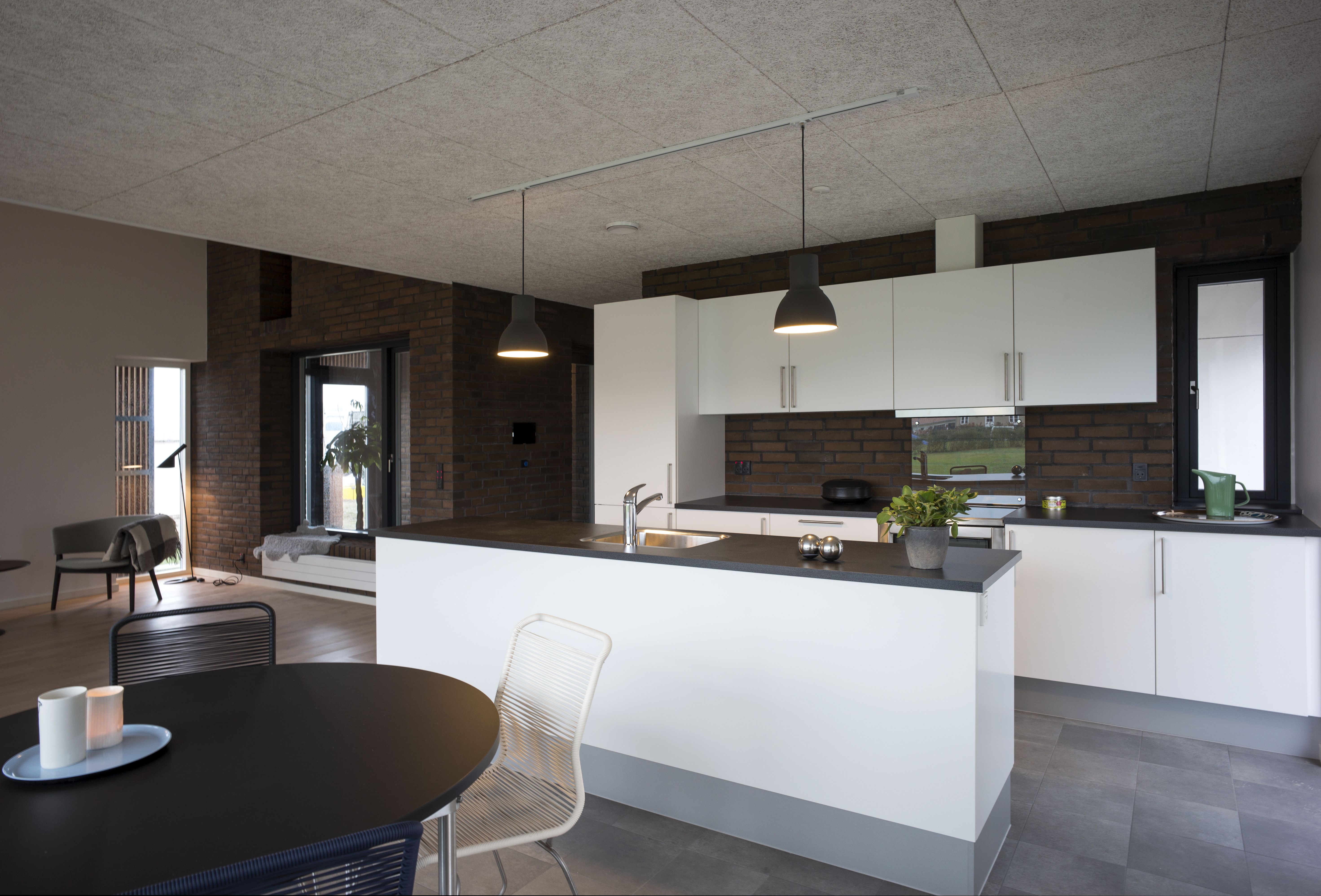Log ind info
The occupants of a house play a very important - and very unpredictable - role in the level of carbon emissions. So there are potentially large savings to be made in residents’ consumption of heat, water and not least electricity.

The Quota House is part of a major development project: The MiniCO2 Houses. The project comprises a total of six houses, each of which illustrates different ways of reducing carbon emissions when constructing, running and maintaining a house.
The Quota House focuses on occupants’ behaviour and consumption patterns and examines how much carbon emissions can be reduced by encouraging more appropriate behaviour on the part of occupants, e.g. through the use of a quota system - a kind of budget account - which sets a clear, low limit for the amount of carbon the occupants emit each month.
The house works with its occupants on three areas aimed at reducing carbon consumption: Firstly through an architectural solution, whereby the layout of the house takes into account the need for daylight and the position of the Sun, and in terms of the occupants’ need for privacy and community. Secondly, through the use of built-in technology that monitors and provides feedback on electricity, heating and hot and cold water consumption. Finally, by the occupants agreeing to keep to a quota system which sets a monthly target for carbon emissions.
Located in the middle of the house is the so-called Climate Belt; a zone through which the occupants pass many times over the course of the day. This contains the house’s information screen, which constantly displays electricity, water and heating consumption relative to the daily and monthly quota.
Below the screen is the house’s emergency start button, which both figuratively and literally is the pivotal point of the Quota House. If the family exceeds its energy quota the building shuts down, but one press of the button will reactivate all of the house’s systems. Pressing the button lets the occupants know they have used too much energy, and need to “put some energy aside” so that there is also enough for the following month.
The design of the house combines intelligent occupant behaviour with an overall goal to reduce carbon emissions. In order to achieve this:
A final report for the Quota House is currently being prepared (October 2019), and it will provide a comprehensive picture of a family’s energy consumption. According to the lifecycle analysis, produced in collaboration with researchers at the Danish Building Research Institute, it will be possible to considerably reduce the consumption of heat and electricity and resultant carbon emissions.
Carbon emissions from heat and electricity consumption in the Quota House’s use phase amount to, respectively, 15 kg and 10 kg CO2/m2/year over a period of 50 years. The corresponding figures for the Reference House are 24 kg CO2/m2/year in electricity consumption and 13 kg CO2/m2/year in heat consumption.
Material consumption over the construction life cycle of the Quota House is 6 kg CO2/m2/year, i.e. slightly greater than that of the Reference House (5 kg CO2/m2/year over a period of 50 years).

Credit: Helene Høyer Mikkelsen
Southern Denmark (Funen)
Pluskontoret Arkitekter
2012-2014
Sustainable construction